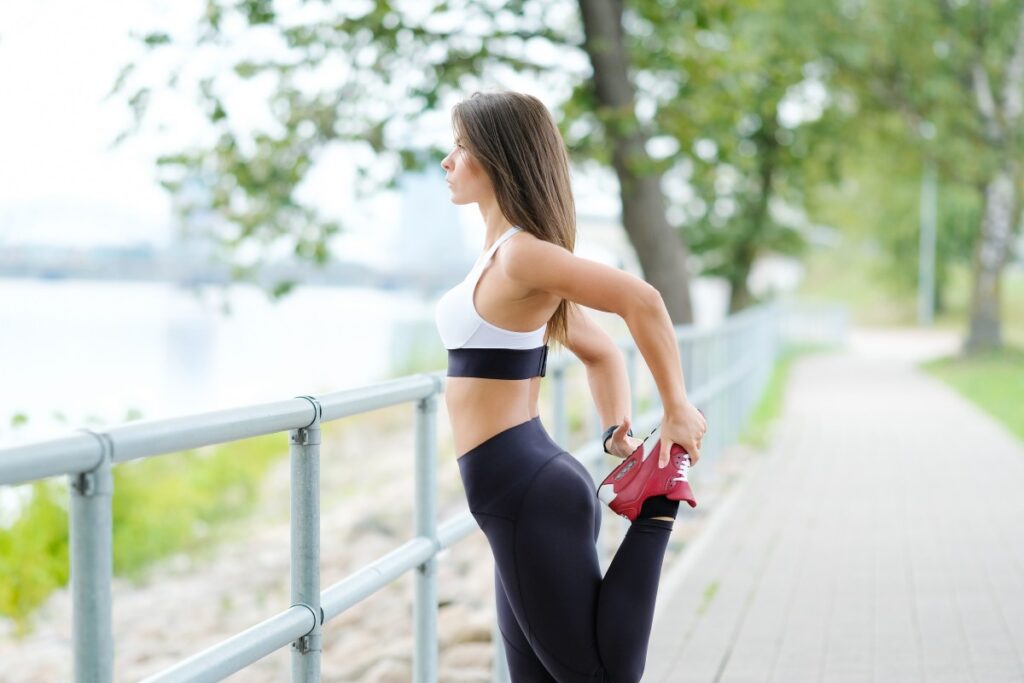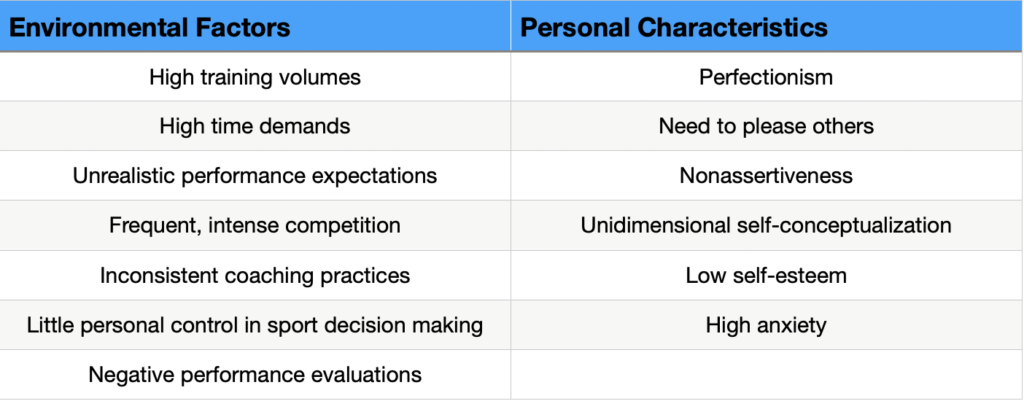
Risk Factors for Overuse Injuries in Youth Athletes
The medical literature has proposed several factors that may contribute to overuse injuries. These are often grouped into intrinsic and extrinsic factors. Intrinsic factors include variations in growth and development, anatomic alignment, muscle-tendon imbalance, flexibility, conditioning, biomechanics, and history of prior injury. Extrinsic factors include workload, sport technique, training environment, and equipment. Each athlete is unique in their attributes, each sport is unique in their specific risk factors.
The complex interaction between intrinsic (individual) and extrinsic (environment) creates a challenge to injury prevention and treatment. Some risk factors are modifiable- including strength, aerobic conditioning and workload. Other risk factors are non-modifiable- gender, age, injury history. Recognizing the relationship between risk factors can help develop injury prevention strategies.
Intrinsic risk factors
We will take a further look at the following intrinsic risk factors for athletes: previous injury history; growth and development; anatomic alignment; flexibility; biomechanics; strength and conditioning; and menstrual irregularity.
- Previous injury is the single strongest predictor of future injuries. Poor rehabilitation, early return to sport and failure to manage workload and lead to repeat injury.
- Children undergo growth and development at different rates. Biological growth and maturation are genetically regulated. Physical growth and cognitive development may progress at different influence successful participation in sports. Adolescent growth spurts predispose skeletally immature athletes to injury at the growth plates, apophyses and joint surfaces. Bones, ligaments and muscle tissue are asynchronous- growing at different rates. These imbalances coupled with sports related loading may increase injury risk.
- Commonly cited risk factors for youth athletes may include alignment abnormalities. These include malalignment of the knee cap (patellofemoral malalignment), flat feet (pes planus), high foot arches (pes cavus), hypermobile joints (elbow hyperextension) and an excessively rounded lower back (lumbar lordosis). Research has not made definitive predictors given the complex and poorly understood effects malalignments may have. Supportive equipment like shoe inserts are controversial, albeit widely used.
- A cause and effect relationship has not been documented regarding joint flexibility. Pre-exercise stretching has not demonstrated consistent findings regarding injury prevention.
- Biomechanical studies have theorized potential risk of injury to specific body parts. However, sport-specific demands likely play a large role in what is considered proper “biomechanical” movement patterns. While one movement pattern may appear detrimental to performance or increase the risk of injury in one sport, it may be a common task in another sport.
- Strength and conditioning may serve a protective role in injury prevention although no sport-specific program has yet been defined. Children that have developed a large “movement vocabulary” may demonstrate foundational strength, endurance and motor skills requisite for sport-specific tasks.
- Sports that emphasize lean mass (distance runners, gymnastics) found a linear relationship between number of menses per year and risk of fracture. Amenorrheic athletes have the highest risk of stress fractures. Possible correlates include poor caloric intake, decreased bone mineral density, and increased fracture risk.

Additional tests of muscular strength
Extrinsic risk factors are largely modifiable. These include sport technique and biomechanics, volume and intensity of workloads, scheduling, training environment and equipment.
- High training volumes and intensity have consistently been shown to increase the risk of overuse injuries. In youth baseball and gymnastics, a strong association has been demonstrated in regards to elbow injury (pitching >100 innings/season in baseball) and wrist pain (skill level and hours trained per week in gymnastics).
- Year-round training and playing on multiple teams have been identified as potential risk factors for injury. High school athletes that participate in 3 seasons or less are 42% less likely to experience an injury compared to year-round athletes. Tournaments that have minimal rest between competitive events may also place excessive stress on youth athletes.
- Poorly fitting equipment (improper sizing, poor maintenance) is lacking sufficient data to draw direct relationships on overuse injury exposure. However, it is quite intuitive that poorly fitting helmets in contact sports may obstruct vision or not adequately protect the head in collision (acute, not overuse injury).

Weak causal evidence is available regarding risk factors for overuse injuries in youth athletes, therefore, more research is needed to help clinicians better understand these mechanisms. Each sport presents with unique movement patterns and each athlete presents with unique character traits. This adds to the complexity of conducting research and developing appropriate guidelines for physical therapists, coaches and athletes to follow.
If you are a youth athlete, parent of a youth athlete or coach youth athletics in Miami, Florida and have questions about information presented in this post, give our office a call. We offers seminars to educate the community on best practices for keeping youth athletes participating in sport. As a lifelong athlete myself, I can appreciate the time, effort and role parents and coaches can play in the development of their children. My goal is to keep as many people participating in athletics for as long as possible.